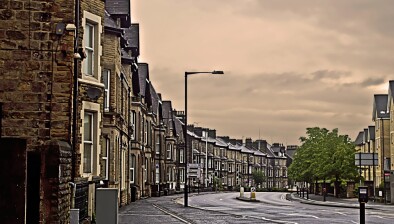England: 7,000 council homes a year could be lost if right to buy funding gap isn’t closed

Almost 7,000 council homes a year could be lost when right to buy is extended to housing associations in England if no extra funding is provided, according to new analysis.
The policy was unveiled in the Conservative party’s manifesto and was included in the UK government’s new Housing and Planning Bill, published this week.
The bill also includes new legislation on the sale of vacant high-value council homes – ministers have previously said that the cash generated would be used to replace both the housing association and council homes sold and also to set up a new £1 billion brownfield regeneration fund.
But analysis from the Chartered Institute of Housing (CIH) shows that local authorities could be left with no money to replace the homes they are forced to sell to fund the policy.
The research indicates that:
CIH chief executive Terrie Alafat said: “We support the government’s ambition to give people the opportunity to achieve their aspiration of home ownership, but if affordable housing is being sold, it is absolutely crucial that it is replaced on the same terms. However, our research appears to confirm our fears that the figures simply will not stack up.
“Selling high-value council homes to fund the extension of right to buy to housing associations could result in the loss of almost 7,000 council homes a year, at a time when more and more people are in need of an affordable home. Such a significant loss of desperately-needed affordable homes would mean more people on lower incomes stuck on council waiting lists all over England – and for generations to come.
“The government should examine how to close this funding gap in the forthcoming spending review, so that both housing associations and local authorities are able to replace the homes they sell with new affordable homes to rent.
“There will undoubtedly be a significant time lag between homes being sold and new homes being built to replace them, especially at the beginning of the policy. Ministers should also be thinking about how to mitigate the impact in London, where this scheme will have a disproportionate effect because of the high numbers of high-value council homes.”
She added: “The government has said it wants to address our national housing crisis by driving up new house building so that we build one million new homes by 2020. But the combined impact of selling high value council homes and cutting affordable housing rents will make it virtually impossible for councils to play their part, as the government had originally planned.”
CIH said the government should consider other options to close the right to buy funding gap, for example by offering smaller discounts than those currently proposed or increasing the qualifying period from three to five years. The organisation is calling for full consultations on the details of the two measures (the sale of high-value council homes and the sale of housing association homes), how they will interact and their implications for housing supply.
CIH’s analysis examines previous work by Policy Exchange and Savills. Policy Exchange has calculated that 210,000 council homes would meet the government’s definition of ‘high-value’. But this is based on out-of-date stock data; updating it to March 2014 gives a figure of 194,000 homes. Policy Exchange has estimated an annual turnover rate of 3.5 per cent, which would equate to 6,790 homes being sold per year.
Meanwhile Savills has argued that 59,000 council homes would meet the government’s definition of ‘high-value’ (based on 2014 stock data). At a 3.5 per cent turnover rate this would imply just 2,070 sales a year. Savills has estimated that an average of £580,000 would be generated per home sold (because most of the sales would be concentrated in London). Based on that valuation, selling 2,070 homes would generate gross annual receipts of £1.2 billion – little more than a quarter of the figure assumed by the government.
The government estimates that 15,000 sales will generate £4.5bn a year, which equates to an average gross receipt of around £322,000 per home. Based on that valuation, selling 6,790 homes a year (using Policy Exchange’s figures) would generate £2.2bn annually, still less than half what the government hopes to raise.








